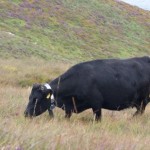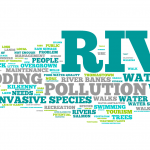This project seeks to develop evidence-based management recommendations for the…
Source to Tap project in the Erne and Derg catchments launched
Lisa Stewart tells us about a major €5.3 million cross-border project to improve water quality in rivers and lakes in the Erne and Derg catchment areas, which provide drinking water for parts of Fermanagh, Tyrone, Donegal, Cavan, Leitrim and Longford.
Source to Tap is a cross-border partnership project that will focus on the River Erne and the River Derg catchments, which are part of our shared drinking water sources. The Derg and Erne drinking water catchments are predominantly rural in nature. The main land uses are forestry, farming and peatland. Certain types of land use management can cause materials such as sediments and herbicides to run off the land and drain into the raw water, the same raw water which Northern Ireland (NI) Water abstracts for drinking water.
These materials must be removed in Water Treatment Works (WTWs) to produce drinking water that meets strict drinking water quality standards. High concentrations of herbicides and variations in colour and turbidity causes increased capital and operational costs to treat and remove these materials. Therefore, it is more cost effective for us to identify these pressures at source and keep our rivers and lakes clean.
Exploring innovative solutions and improving land use management practice
The Project will explore innovative solutions to improving land use management practice that will reduce impacts on raw water quality. The project will put community and stakeholder engagement at the heart of the project and will work with farmers, land managers, forestry providers, and the wider community to help identify and share best practice approaches to protecting drinking water sources.
The partners will work together to deliver work packages aimed at Learning and Outreach, Best Practice Forestry pilot projects, a Peat Restoration pilot project and a cross-border pilot Land Incentive Scheme (LIS) in the Derg catchment.
Monitoring and evaluation
Each of these activities will be monitored and the results evaluated to establish the cost effectiveness of the measures. Best practice from each of these work packages will enable us to produce a Sustainable Catchment Area Management Plan (SCAMP), so that these ideas and practices can be replicated in other drinking water source areas in the United Kingdom, Ireland and beyond.
Funding and project partners
NI Water secured the funding from the European Union’s INTERREG VA Programme, the Department for Agriculture, Environment and Rural Affairs (DAERA) in Northern Ireland, and the Department for Housing, Planning and Local Government (DHPLG) in Ireland. The funding is managed by the Special EU Programmes Body (SEUPB) and will run from 2017 to 2021.
NI Water will lead a partnership, which includes Irish Water, The Rivers Trust, Ulster University, Agri-Food and Bioscience Institute (AFBI) and East Border Region. Together the partners will work together to test pilots for how to protect raw water quality at source across both jurisdictions.
Lisa Stewart, Source to Tap Project Officer
www.facebook.com/SourcetoTapEU/
Twitter: @SourcetoTapEU







